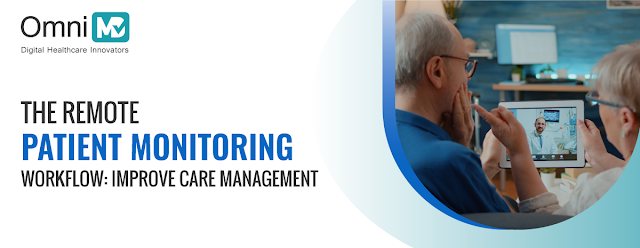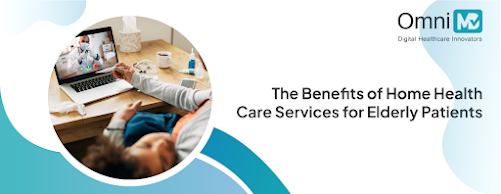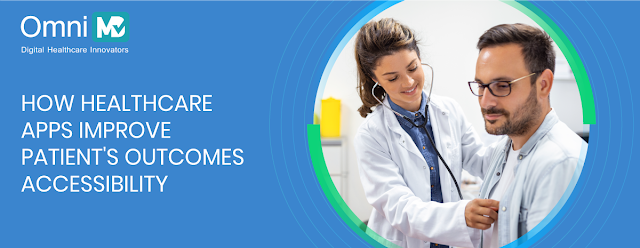The Remote Patient Monitoring Workflow: Improve Care Management
Patient management is an integral aspect of
the successful running of healthcare units. The trend of managing
administrative operations across sectors has evolved. The healthcare industry
has been experiencing a paradigm shift in its management methods, thanks to the
technology that brings the opportunity to improve patient care without making
it impeding healthcare systems.
RemoteHealth Monitoring is one such area that has been
gaining much attention. This game-changing technology has also increased
patient engagement. Much of this transition has occurred since the COVID-19
pandemic, when many people discovered the benefits of Remote Patient Monitoring (RPM).
The Challenges of RPM
Workflows and Why it Needs to be Addressed
Efficient RPM workflows can ensure the
timely delivery of care. If workflows aren’t streamlined, it can be challenging
for healthcare professionals, as spending more time on administrative tasks can
reduce their efficiency in identifying and addressing patient needs. Moreover,
efficient workflows can minimize errors, which adds to improved patient safety.
Here are some common challenges that
healthcare units may need to address in patient monitoring services.
Communication
Ineffective information exchange between
departments in healthcare organizations can create communication gaps,
resulting in deferred decision-making and compromised patient care. Such gaps
can be bridged, and miscommunication can be reduced with appropriate steps to
implement efficient communication mechanisms. Advanced technological
intervention can improve the network among healthcare teams within an
organization, facilitating efficient patient monitoring.
Patient records
Inaccessibility to comprehensive patient
records can lead to delayed diagnosis and treatment. Missing critical
information or wasting time on duplicating tests prolongs healthcare and can
pinch patients’ pockets by increasing medical costs. It can lead to
dissatisfied patients. Moreover, all this can increase the administrative
burden on your healthcare system, elevating the chances of errors.
Care needs
Healthcare demands are becoming more
complex daily, simultaneously pushing systems to match treatment requirements.
Healthcare units not equipped to cater to such needs may find it increasingly
difficult to handle or improve patient care. Appropriate remote health
monitoring tools and processes can simplify things for healthcare providers to
manage patients' needs and improve organizational management.
Staff
The staffing crisis is real! While
expanding healthcare organizations and catering to patients’ demands, many medical care units have been grappling with a shortage of qualified and
experienced staff, hindering the timely delivery of quality patient care.
Often, existing staff have to play multiple roles, which can lead to fatigue,
increase the possibility of mistakes and delays, and propel the risk of
infections.
If you are seeking solutions to the above
issues at your healthcare unit, here’s how OmniMD’s remote patient monitoring
systems can be helpful.
Why Should You Choose OmniMD?
The OmniMD RPM platform can minimize costs
incurred by patients and medical centers while empowering the former to adopt
healthier behavior through healthcare participation. Here’s how OmniMD’s RPM
can work as an advantage.
1. It enables round-the-clock
self-monitoring
Patients can access appropriate guidance
from medical professionals from their comfort nests in managing even chronic
health conditions. Can help self-monitoring for patients
With OmniMD’s RPM, you and your doctor can
track your health and lifestyle updates in real time. Their RPM offers a
variety of wearable and non-wearable devices that can track your vitals and are
easy to integrate into healthcare systems, enabling better management of
chronic health conditions.
2. It is affordable for patients and
providers
Visiting a healthcare unit can be taxing as
well as expensive. A hospital stay can often cost more than the amount covered
by your health insurance policy. You can get all the care you require at home
and still enjoy professional medical surveillance with OmniMDs RPM services.
OmniMD’s technology facilitates patient
engagement and reduces staff's workload, optimizing their efficiency.
3. It can make consultations hassle-free
and faster
You can schedule your doctor’s appointments
and even consult the best doctors quickly from your home with the option of
teleconsultations. Remote health monitoring technology facilitated by OmniMD
can enable access to top-rated medical care facilities without stepping out of
your home.
4. Help provide quality care
With real-time patient data at your
fingertips, healthcare providers can monitor patient’s vital signs and symptoms
remotely and reduce the need for hospitalization. OmniMD’s RPM can enable
healthcare providers to offer predictive care to patients by tracking early
warning indicators, thereby reducing treatment delays and averting emergencies.
Lastly, OmniMD’s remote health monitoring
services can educate patients to understand their health conditions, engage in
positive health behavior, and take responsibility for self-care.




Really insightful! Thanks for breaking this down.
ReplyDeleteAdobe Photoshop Download
SuperAntiSpyWare Pro
PC Helpsoft Driver"